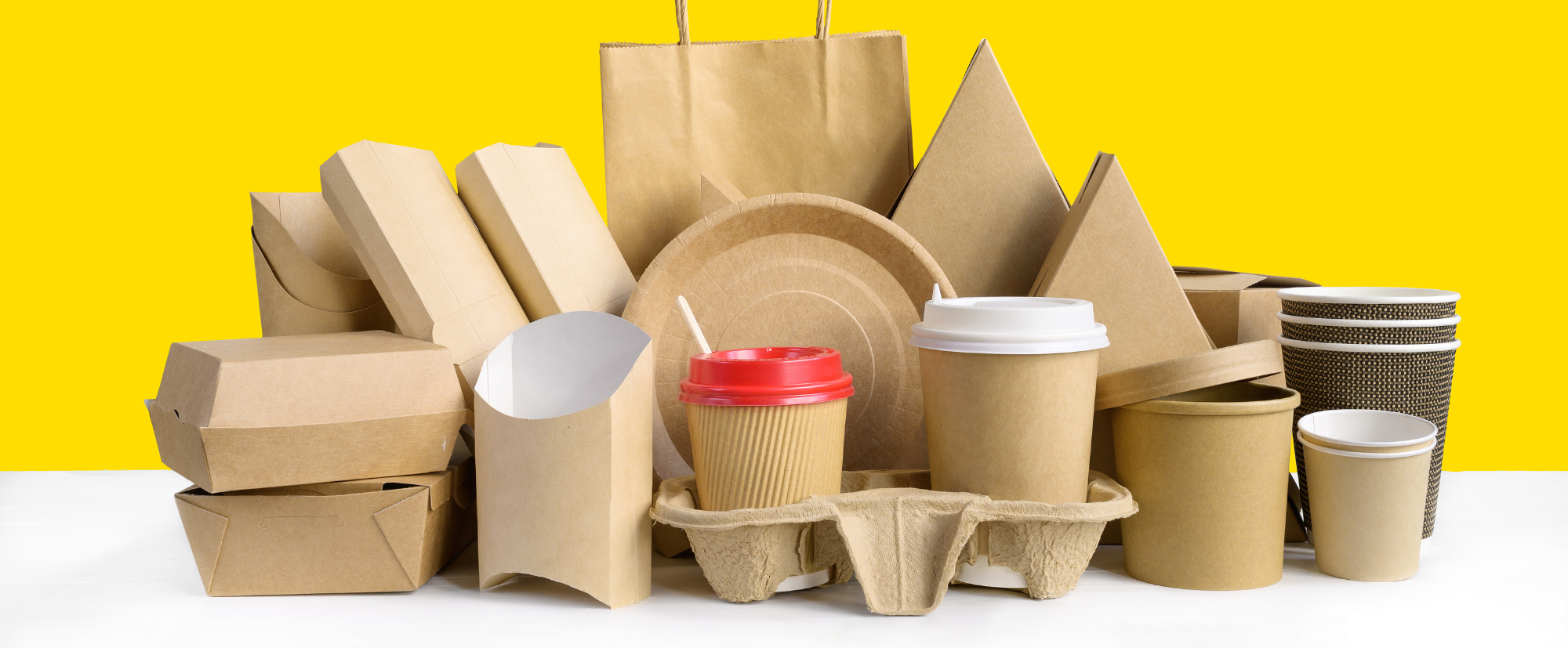Can You Recycle Plastic Silverware?
It's easy to believe that your plastic cutlery is safe when considering recycling. They are composed of plastic, after all. Regretfully, the solution is a little trickier than that. So, can plastic cutlery be recycled? Because polystyrene is used to make most plastic utensils, they are recyclable.
However, what occurs when you discard your plastic fork? It will probably wind up in a landfill, and it will remain for a very long time before disintegrating into smaller bits. The issue with this is that, of all the plastic ever produced, only five per cent has been recycled. Let's learn more about recycling plastic cutlery.
Recyclability of Plastic Utensils
Varied Materials
Plastic utensils are composed of various types of plastic with varying densities and melting points, rather than a single, homogeneous substance. It's possible for certain plastic spoons to include multiple types of plastic. Recycling them may be challenging because various plastic types require sorting before recycling is possible.
Unique Shapes
The uneven shape of plastic utensils makes it challenging for automated machinery to sort them. Because they are lighter than other materials like paper or glass, they also easily pass through sorting screens. This indicates that this kind of plastic needs to be manually sorted into the appropriate bin for processing in order to be removed from the recycling stream.
Composition of Plastic Utensils
Now, what is the composition of plastic utensils? This kind of plastic is composed of polymers like polypropylene, PET, and polystyrene.
Polystyrene, a kind of plastic used to produce products like Styrofoam, is the material that makes up the bulk of plastic utensils.
PET (polyethylene terephthalate) or polypropylene, a kind of plastic resin used in food packaging, are the materials utilized to make other plastic silverware.
This type of plastic can also be recycled through the neighbourhood recycling program and is more resilient to decomposition than polystyrene.
Disposal of Plastic Utensils
To find out how to get rid of plastic cutlery, check if your community's curbside service accepts knives and forks.
Plastic spoons, knives, and forks are generally not accepted in many municipal recycling programs, so avoid throwing them in the trash.
Handling Unused Plastic Utensils
If you're a regular person, you most likely have a cabinet full of plastic cutlery. If so, you may be wondering what you can do with plastic silverware that isn't being used. Here are some suggestions for you:
Donation
A lot of shelters only use throwaway plates and cutlery, which means they have to buy them if they don't already have any. If you also donate a few paper plates and napkins, you can have an even greater influence!
Crafts
You can try to consider including the utensils in a recycling-themed art project for children!
Retain for Future Use
Consider storing a few plastic utensils for each time you dine out if you plan to eat at the same restaurant or elsewhere frequently.
Avoid from Restaurants
If you wish to switch from single-use to reusable instead of single-use, there are many solutions available; just ask! This can be challenging if you're dining at a fast-food restaurant.
Reusability and Safety of Plastic Utensils
Can you repurpose plastic cutlery then? It is possible to reuse plastic cutlery. Reusing them is acceptable as long as you wash them in hot water with soap.
Nevertheless, even though they are clean, bacteria can still grow on them, so if you want to use them for cold food, you should use an alternate set of cutleries for every kind of food.
Forks and plastic spoons work well, too, for stirring paint. Place them in your drawer or cabinet to be kept until the next time, and then wash them off in hot, soapy water after the paint has dried.
Donation Venues for Unused Utensils
Don't worry if you have some plastic utensils that you no longer need and you're not sure where to give them away. Donating them to shelters for natural disaster victims is one way to use them. To make sure they accept the particular kinds of plastic utensils you have, you might wish to give them a call in advance.
In addition to material gifts, many organizations also take cash donations, which they put toward purchasing additional supplies or covering other people's costs.
Reducing Plastic Utensil Use
Bring Personal Cutlery
Rather than going out to buy new silverware, simply take a reusable bag and fill it with everything you'll need for your next takeout or delivery order.
If you're lacking in reusable bags, there are lots of solutions available online or at your neighborhood store! Rather than going out to buy new silverware, simply take a reusable bag and fill it with everything you'll need for your next takeout or delivery order.
If you're lacking in reusable bags, there are lots of solutions available online or at your neighborhood store!
Opt for Edible Cutlery
Compostable and biodegradable materials, such as seaweed and nuts, can be utilized to make edible cutlery or even as fertilizer.
They're perfect for having a picnic with friends or dining at restaurants. The possibility of them becoming lodged in your teeth is the sole drawback. But that's the reason floss exists!
Choose Compostable Options
Purchasing compostable cutlery is always an option, of course! Bamboo utensils are available in two different sizes: little packets that are supplied individually or bigger sets which are packaged in a container. After every meal, less waste will be left behind in any case.
Prioritize Recycling
We still have a lot of work ahead of us if we want to get rid of all of our rubbish, even if we can avoid using single-use plastics. And that is the use of recycling!
To ensure that your waste is recycled rather than disposed of in a landfill, make sure you separate it from other rubbish.
Avoid Single-Use Items
Straws and plastic bags are examples of such products. Instead, go to the grocery shop with reusable products like a cloth bag or a metal water bottle.
Switch to Reusable Bottles
It's surprising to see that the majority of individuals use 300 disposable cups annually on average. That is nearly one per day! Putting your money in a reusable water bottle will help prevent single-use cups from ending up in landfills, where their decomposition will take hundreds of years.
Drawbacks of Plastic Cutlery
Health Risks
Recycling plastic silverware is proven to leach hazardous substances into food when it comes into contact with hot liquids.
Freshwater Impact
Plastic may require up to 1000 years to totally dissolve, so much of it winds up in our seas and rivers, and there it cannot degrade.
Marine Extinction Risks
Plastic also plays a significant role in the extinction of marine species, such as seagulls and sea turtles, who misinterpret floating plastic toys for prey, such as jellyfish or squid larvae.
Threats to Wildlife
Wildlife can confuse plastic for food, causing them to starve or die as a result of choking on the cutlery.
Air Contamination
Plastic production emits hazardous chemicals into the atmosphere, which contributes to global warming, smog development, and other types of air pollution.
Carbon Emissions
Plastic manufacturing uses a lot of fossil fuels and emits greenhouse gases, which lead to climate change.
Environmental Harm
Plastic does not biodegrade like paper does. Rather, it degrades into smaller bits over time, posing an environmental concern even after they've been disposed of in landfills or oceans.
Global Proliferation
Ocean plastic utensils have spread to every part of the world, and it's nearly hard to find a restaurant that doesn't require you to use plastic.
FAQs
1. Can clean plastic cutlery be recycled?
Cutlery in good shape can be donated to a charity for reuse. Wooden cutting boards can be composted by placing them in a garden waste disposal bin. Metal cutlery that is no longer in use can be recycled alongside metal scrap at-home waste recycling centres; discover your nearest location below.
2. How many times can you reuse plastic cutlery?
Plastic cutlery is intended for single use. They are reusable, although it is suggested that you discard plastic cutlery after use. Plastic cutlery may grow unsanitary and hazardous if used repeatedly.
3. How long does plastic silverware last?
Disposable spoons, forks, and bowls can take as long as 1,000 years to degrade organically. Because these things are frequently too tiny for recycling machinery, they wind up in landfills or incineration facilities.




